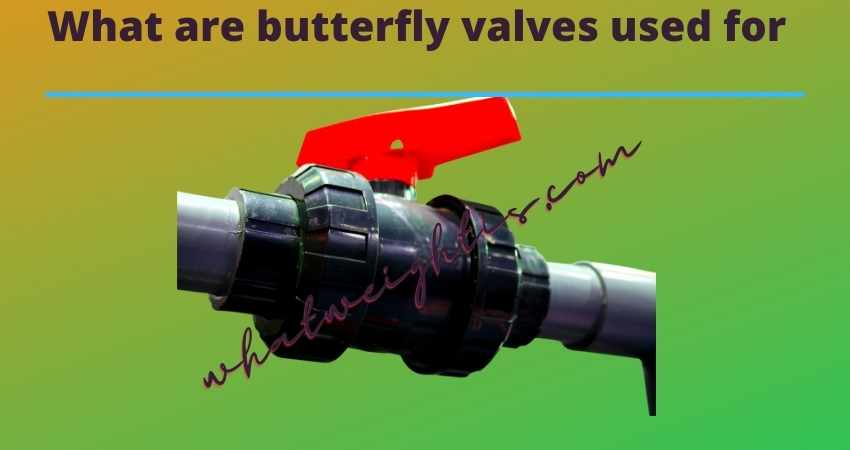Butterfly valves are commonly used in industrial settings for regulating the flow of various types of fluids such as water, gas, or chemicals. They are preferred over other types of valves due to their compact size, low cost, and ease of operation. In this article, we will discuss the uses of butterfly valves, their advantages, and some frequently asked questions about these valves.

What are butterfly valves?
Butterfly valves are a type of quarter-turn valve that uses a disc-shaped element to regulate the flow of fluid through the valve. The disc rotates 90 degrees within the valve body, either parallel or perpendicular to the flow of the fluid, to control the amount of fluid passing through.
What are the uses of butterfly valves?
Butterfly valves are used in a wide range of applications, including:
- Water treatment plants: They are used to regulate the flow of water in treatment processes such as filtration, chlorination, and softening.
- HVAC systems: Butterfly valves are used to regulate the flow of air and water in heating, ventilation, and air conditioning systems.
- Chemical and petrochemical industries: They are used to control the flow of chemicals, gases, and other hazardous materials.
- Food and beverage industry: Butterfly valves are used in the processing and transportation of liquids such as milk, beer, and wine.
What are the advantages of butterfly valves?
Some of the advantages of butterfly valves are:
- Low cost: Butterfly valves are less expensive than other types of valves such as gate valves, ball valves, or globe valves.
- Lightweight and compact: Butterfly valves are small in size and weigh less than other valves, making them easier to install and maintain.
- High flow rate: Butterfly valves have a large flow capacity and can handle high volumes of fluid with low pressure drop.
- Easy to operate: Butterfly valves require only a quarter-turn to open or close, making them easy to operate.
- Low maintenance: Butterfly valves have fewer moving parts, reducing the need for maintenance.
What are the types of butterfly valves?
There are three main types of butterfly valves:
- Wafer butterfly valves: These valves are designed for use in systems with low pressure and are held in place between two flanges.
- Lug butterfly valves: These valves have threaded inserts on either side of the valve body, allowing them to be bolted onto a system without needing to remove the downstream piping.
- Double offset butterfly valves: These valves have a more complex design than the other two types and are commonly used in high-performance applications.
How do butterfly valves work?
Butterfly valves work by rotating a disc inside the valve body to regulate the flow of fluid. The disc is attached to a stem that passes through the center of the valve body and is connected to an actuator or handle. When the handle is turned, the disc rotates, allowing the fluid to pass through the valve. When the handle is turned in the opposite direction, the disc rotates back to its original position, closing off the flow of fluid.
How do 3 way ball valves work
In conclusion, butterfly valves are an essential component in many industrial processes due to their low cost, ease of use, and low maintenance requirements. They are used in a wide range of applications, from water treatment plants to the food and beverage industry. Understanding the types and uses of butterfly valves can help industries choose the right valve for their specific needs.
Mr. Jasim Uddin holds significant knowledge, skills, and experience in several fields relating to electrical engineerings, such as power electronics, telecommunications, and data transmission. The articles on engineering are very interesting to him, and this is why he finds writing engineering articles to be very fun.

